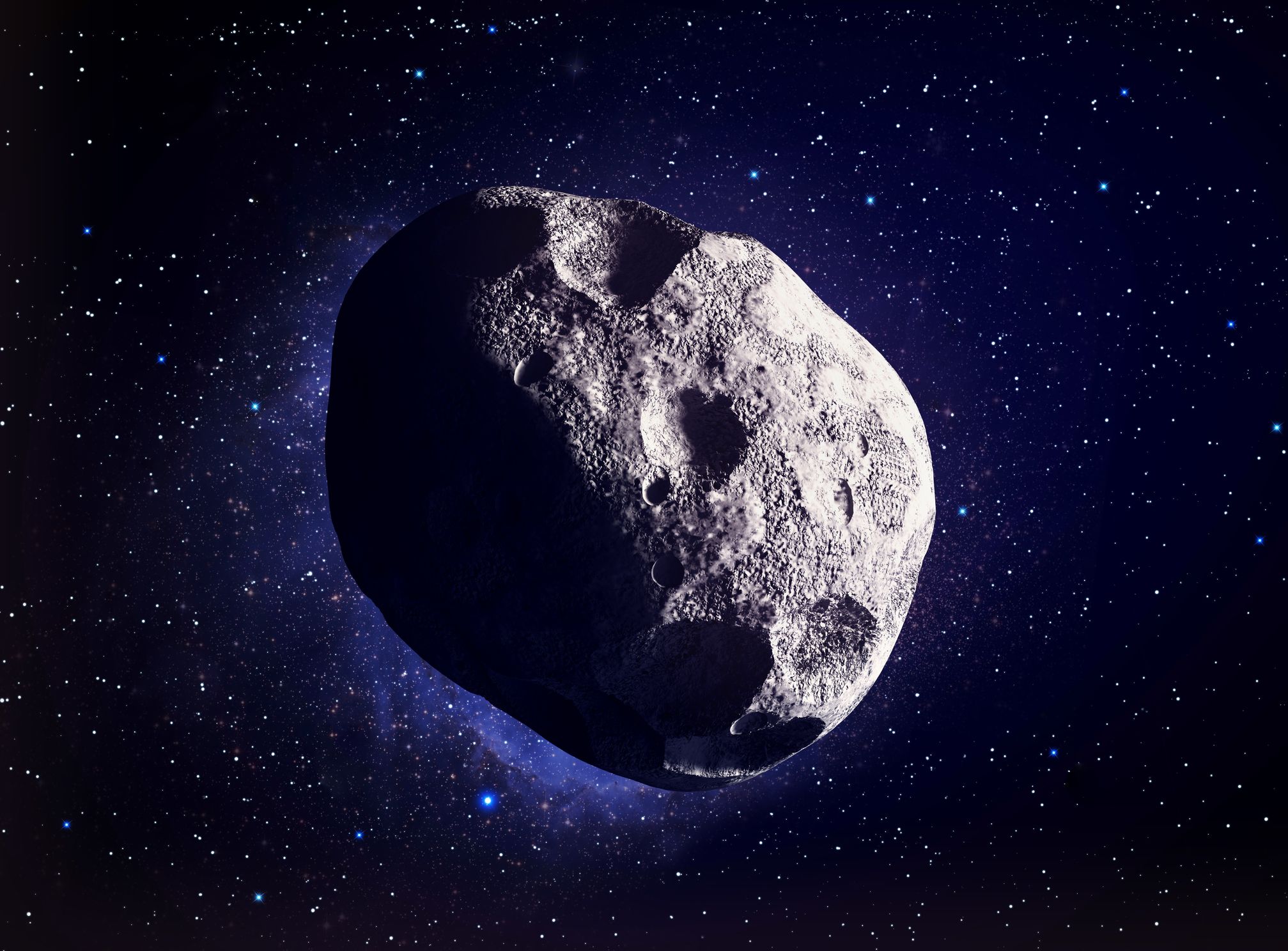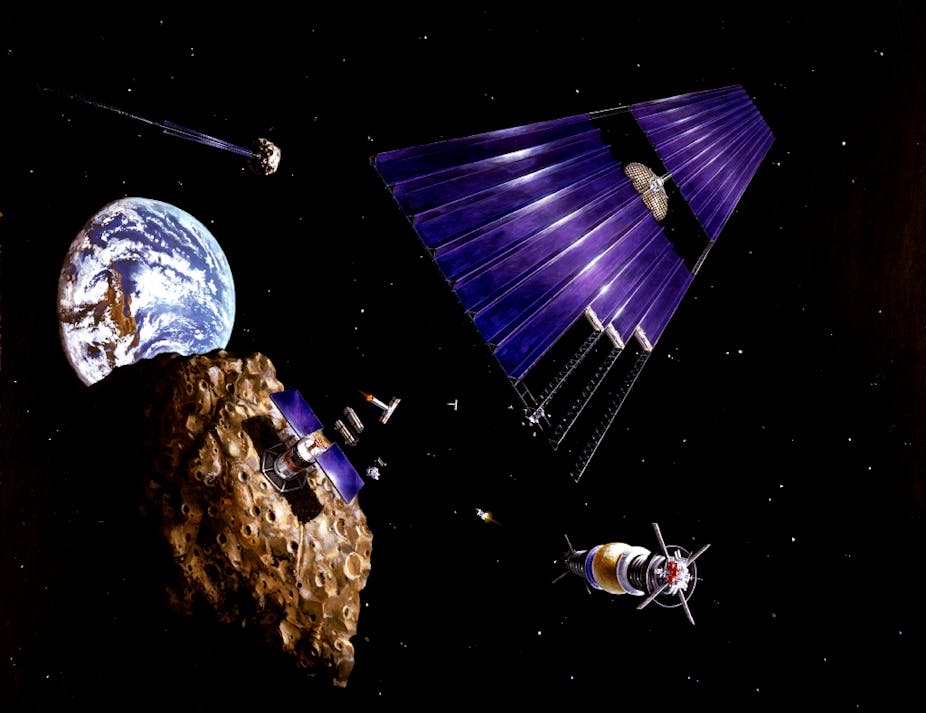Asteroids are the most numerous objects in the solar system. So far, hundreds of thousands of asteroids are known, with hundres of new discoveries every day. Altough the total number of known asteroids is large, very little is known about the physical properties of individual objects.
An asteroid is a small rocky object that orbits the Sun. Asteroids are smaller than a planet, but they are larger than the pebble-size objects we call meteoroids. A meteor is what happens when a meteoroid – a small piece of an asteroid or comet – burns up upon entering Earth’s atmosphere, creating a streak of light in the sky. NASA warned that Earth is about to get visited by a total of 6 asteroids this week. The biggest space rock in the group is larger than the Empire State building. The first asteroid that will approach Earth has been identified by CNEOS as 2020 FH. As indicated in CNEOS’s database, this asteroid is currently traveling across the Solar System towards Earth at. Browse and discover detailed information about 79 of the most interesting asteroids and dwarf planets. Objects are listed in order of decreasing brightness.
If the dinosaurs had a space program, they would still be here.
As an example of the economic value of space resources, let’s consider the smallest known M-type asteroid, the near-Earth asteroid known as 3554 Amun (two kilometers in diameter): The iron and nickel in Amun have a market value of about $8,000 billion, the cobalt content adds another $6,000 billion, and the platinum-group metals add another $6,000 billion.
— John S. Lewis, Mining the Sky.
There are two things you need to know about asteroids:
- Asteroids can make us extinct (the threat) — see Planetary Defense Page and Planetary Defense Library
- Asteroids can make us rich and provide homes for trillions of people (the promise).
The Promise
There are vast numbers of asteroids in near-Earth orbits, some of which are easier to access than the Moon. The potential mineral wealth of these asteroids is so great that huge profits could be made once we can start mining them for materials to be sold to markets on Earth. Like space solar power, this is one of the potential revenue sources for the large startup costs for the first space settlements.
Asteroids can also be an enormous boon to orbital settlements. Orbital settlements must import their materials from either the Moon or asteroids. Diverting a few small (30-70 meter diameter) asteroids into Earth orbit could supply all the materials needed for early orbital settlement development.
While early orbital settlements may well be in Earth orbit, eventually humanity will spread out across the solar system. Then asteroids become prime targets for new settlements. Hollowing out a large, solid asteroid and building homes inside has great appeal. Such a settlement will have ample materials in the form of the asteroid itself, and the large mass of the asteroid provides immediate and substantial radiation protection. With a little care radiation levels could be less than on Earth.
Settlement of a large asteroid could start with a relatively small tunnel, providing a home for workers that could be gradually extended over time to build large open spaces and wonderful living areas with a complex geometry, providing endless, safe exploration possibilities for the children.
While some asteroids are believed to be solid enough to be hollowed out for living space, others are known to be ‘rubble-piles,’ barely held together by their weak gravity. Sankat mochan mahabali hanumaan all episode free download. While such asteroids cannot be hollowed out for living in, they are much easier to mine to provide materials for large numbers of orbital settlements. Reloader activator 3.3 download.
The vast material resources of the asteroid belt beyond Mars may eventually provide home for the bulk of humanity.
See also:
- Asteroid Retrieval Feasibility Study, Keck Institute for Space Studies, Jet Propulsion Laboratory (2012) PDF 51 pages
- Asteroid Mining: Key to the Space Economy, by Mark Sonter
- Technologies for Asteroid Capture into Earth Orbit, by Stephen D. Covey
- The Technical and Economic Feasibility of Mining the Near-Earth Asteroids, by Mark Sonter (1998 paper)
- The Technical and Economic Feasibility of Mining the Near-Earth Asteroids, by Mark Sonter (1998 Master’s Thesis updated 2012) PDF 207 pages
- Near-Earth Asteroid Mining, by Shane D. Ross (2001) PDF 24 pages
- The Role of Near-Earth Asteroids in Long-Term Platinum Supply, by Brad R. Blair (2000) PDF 15 pages
Links
Information about Asteroids
- Neofuel – Near Earth Orbit rocket fuel
- NASA photo gallery of asteroids.
- General information about asteroids.
Browse and discover detailed information about 79 of the most interesting asteroids and dwarf planets. Objects are listed in order of decreasing brightness.
= visible to the naked eye= binocular, brighter than 10th magnitude
Location: Greenwich, United Kingdom [change]
Asteroid 4 Vesta |
Magnitude 7.1 in Leo
Dwarf Planet 1 Ceres |
 Magnitude 9.2 in Cetus
Magnitude 9.2 in CetusAsteroid 6 Hebe |
Asteroids 2020
R.A: 20h 02m 01s Dec: -07° 14’ 43”Magnitude 9.9 in Aquila
Asteroid 7 Iris |
Magnitude 10.0 in Pisces
Asteroid 3 Juno |
Magnitude 10.3 in Ophiucus
Asteroid 12 Victoria |
Magnitude 10.3 in Capricornus
Asteroid 2 Pallas |
Magnitude 10.5 in Pisces
Asteroid 9 Metis |
Magnitude 10.5 in Virgo
Asteroid 15 Eunomia |

Magnitude 10.7 in Cancer
Asteroid 29 Amphitrite |
 Dec: +11° 25’ 45”
Dec: +11° 25’ 45”Magnitude 10.9 in Leo
Asteroid 349 Dembowska (1892 T) |
Magnitude 11.0 in Capricornus
Asteroid 20 Massalia |
Magnitude 11.0 in Aries
Asteroid 8 Flora |
Magnitude 11.1 in Gemini
Asteroid 14 Irene |
Magnitude 11.1 in Cancer
Asteroid 5 Astraea |
Asteroids And Comets
: -16° 35’ 29”Magnitude 11.2 in Sagittarius
Asteroid 10 Hygiea |
Magnitude 11.5 in Cancer
Asteroid 433 Eros |
Magnitude 11.5 in Corona Australis
Asteroids Game
Asteroid 324 Bamberga |
Magnitude 11.6 in Lupus
Asteroid 16 Psyche |
Magnitude 11.7 in Gemini
Asteroid 18 Melpomene |
Asteroids And Meteoroids
Dec: +17° 25’ 17”Magnitude 11.8 in Cancer
Asteroids

| > Next |